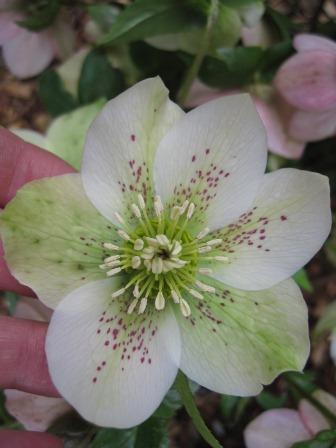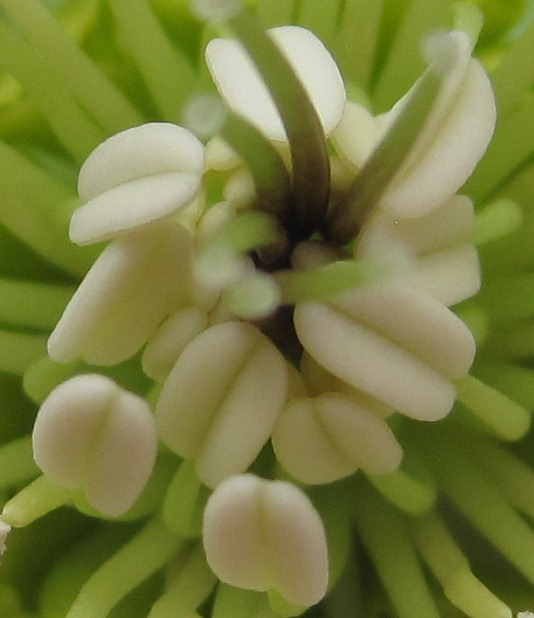
Before I get into the meat of this issue I wanted to mention that, a couple of weeks ago, Purdue came out with a statement which basically supported a post that I had previously written – one where I stated that there’s not a lot of good evidence that using Roundup leads to sudden death syndrome in soybeans. Yeah me! Well, not really – that’s not the way science works. While it is nice that other scientists agree with my conclusion, that doesn’t mean that Round-up isn’t affecting soybeans – it just means that there’s no evidence of it right now. Science doesn’t stop because a few scientists agree.
Same with compost tea – Linda and I have both posted about compost tea and we agree that, at this point, there’s no reason to use it. But science doesn’t stop, and it wouldn’t be completely surprising if, someday, someone comes up with a compost tea type product which is actually reliably useful.
Now on to the flavor of the day! Brix. So, what is brix you ask? Brix is a measurement of solids in a water (usually these solids are sugars). It’s easy to test brix by using something called a refractometer which measure how light bends when it passes through a thin film of water. We use brix in foods to tell how sweet they are. We just take a little sample of sap or juice, put it on a refractometer and bang, we know about how much sugar we have (actually, as I mentioned earlier, any dissolved solid, not just sugar, can alter measurements, as can non-solids, like alcohol. But the dominant thing affecting the brix measurement is usually sugar content).
Though it isn’t exactly mainstream, there is something out there called brix based gardening. Basically, the goal of brix based gardening is to increase the brix of the food we eat. Increasing the brix means increasing the sugar. The theory is that the higher the brix of a food the better it is – in terms of taste, resistance to insects, resistance to disease, healthiness. The list goes on and on.
The biggest problem with arguing that gardening based on brix is a bad idea is that there is a nugget of truth in brix based gardening. Moreso than compost tea (in my opinion), brix has proven itself useful in certain situations. Particularly in wine making, brix is used to quantify the sugar content of your grapes so that you can predict the sweetness of the wine you will produce (it will also help tell what level of alcohol you’ll get). As time goes on at the end of the season grapes increase their sugar content, so grapes are picked according to when the brix is right for the wine you want to produce. Another grain of truth is that with higher brix you’ll get less insect pressure. This stands to reason, at least to some extent, because insects are usually looking for nitrogen rather than sugar.
But along with the little grain of truth comes some BS. For example, the idea that eating a food with a higher brix reading means that you’re eating a healthier food is just silly. It just means that you’re eating a sweeter food. The idea that higher sugar levels mean a healthier plant is also silly. In fact, one of the most significant things which can make brix go up is putting the plant under drought stress. Under drought stress, with less water, the concentration of sugars in sap naturally increases (because there’s less water to dilute it). Raisins are sweeter than grapes! Furthermore, the variety of the plant which you grow has an extreme effect on brix. Chardonnay grapes may have a low brix (around 21), a late harvest Riesling may have a brix of 42!
I have seen an inordinate amount of gobbledygook about mixing different fertilizers to get the perfect ratio of nutrients to increase brix. First, it’s important to realize that fertilizers can alter sugar content. For example, fertilizing heavily with nitrogen will increase growth of the plant but will usually decrease sugar concentration (hence brix). Indeed, from what I’ve seen, nitrogen seems to be the biggest player in sugar content.
That said, calcium and phosphorus based fertilizers seem to be the favorites among brix based gardeners – but from what I can find research hasn’t actually shown that these fertilizers increase brix on anything approaching a reliable basis. Another common recommendation is a molasses based fertilizer – once again, research on molasses doesn’t seem to show that it can do much to increase brix. Honestly, it looks to me like those recommending high brix as necessarily a good thing for us and our plants and then offering methods to do it are putting a scientific veneer on witchcraft – at least until further research comes along. I am sure that those favoring brix-based gardening will disagree with me – if you do and you read this I would welcome seeing some published papers which support your claims.







